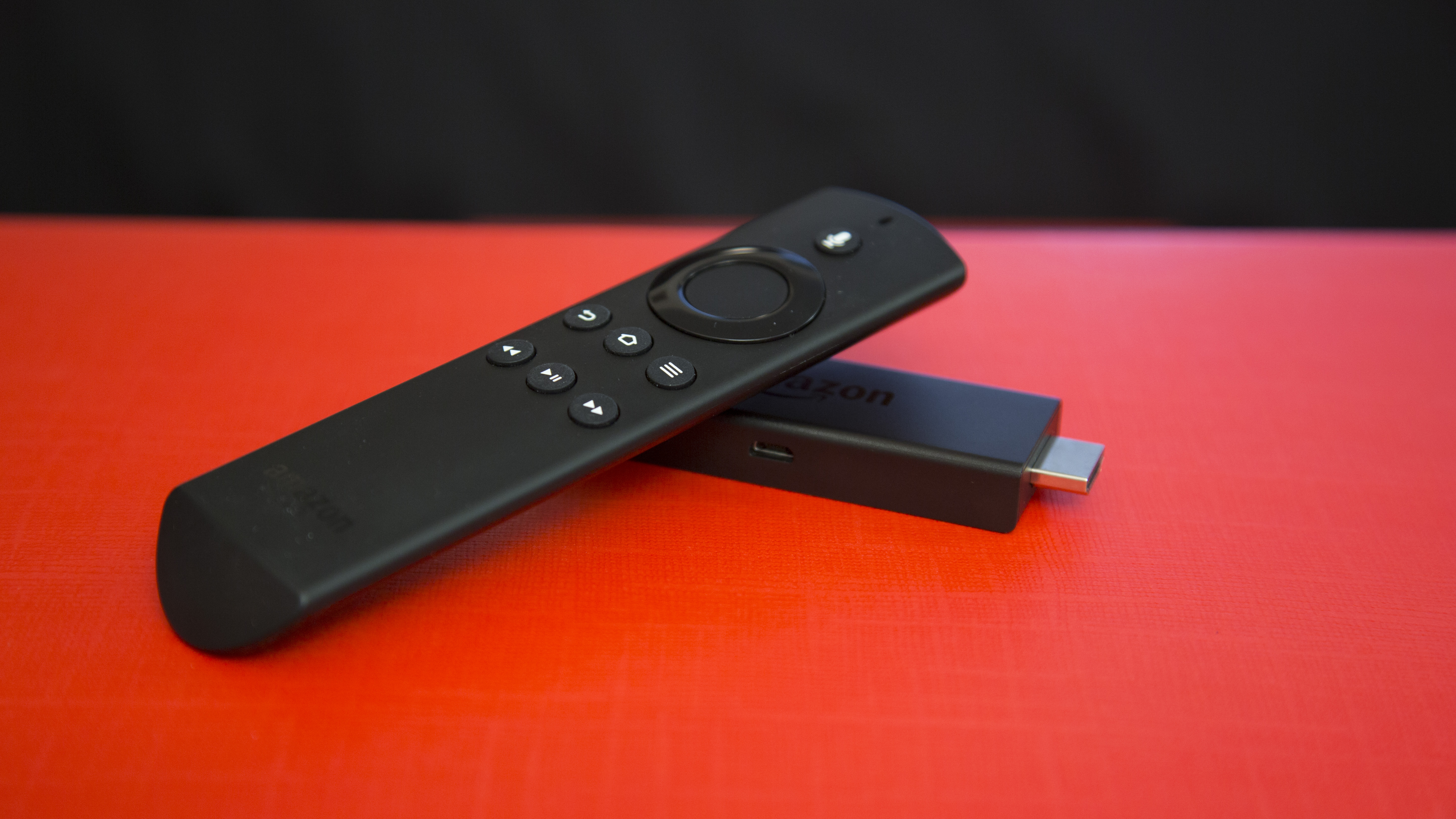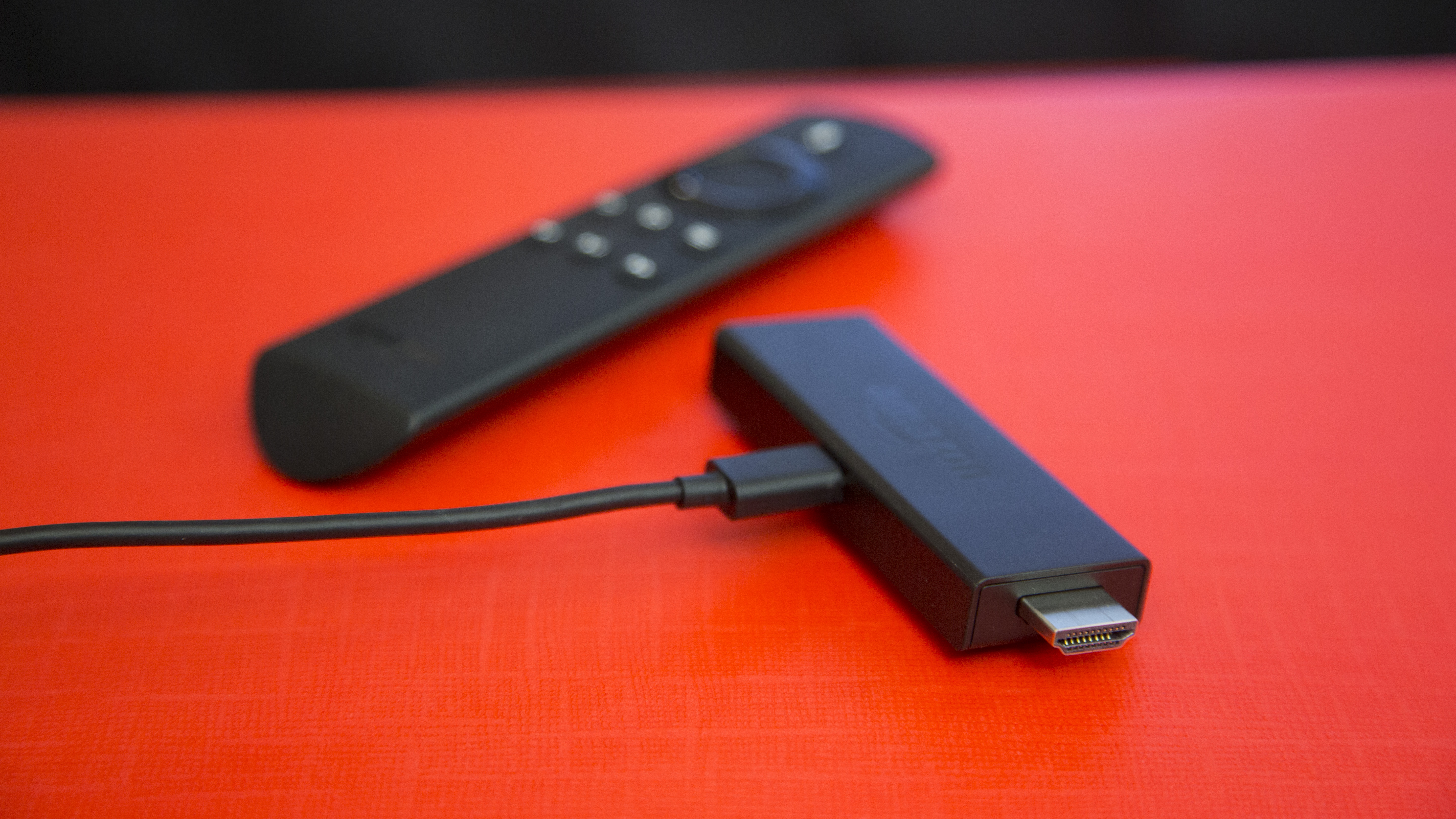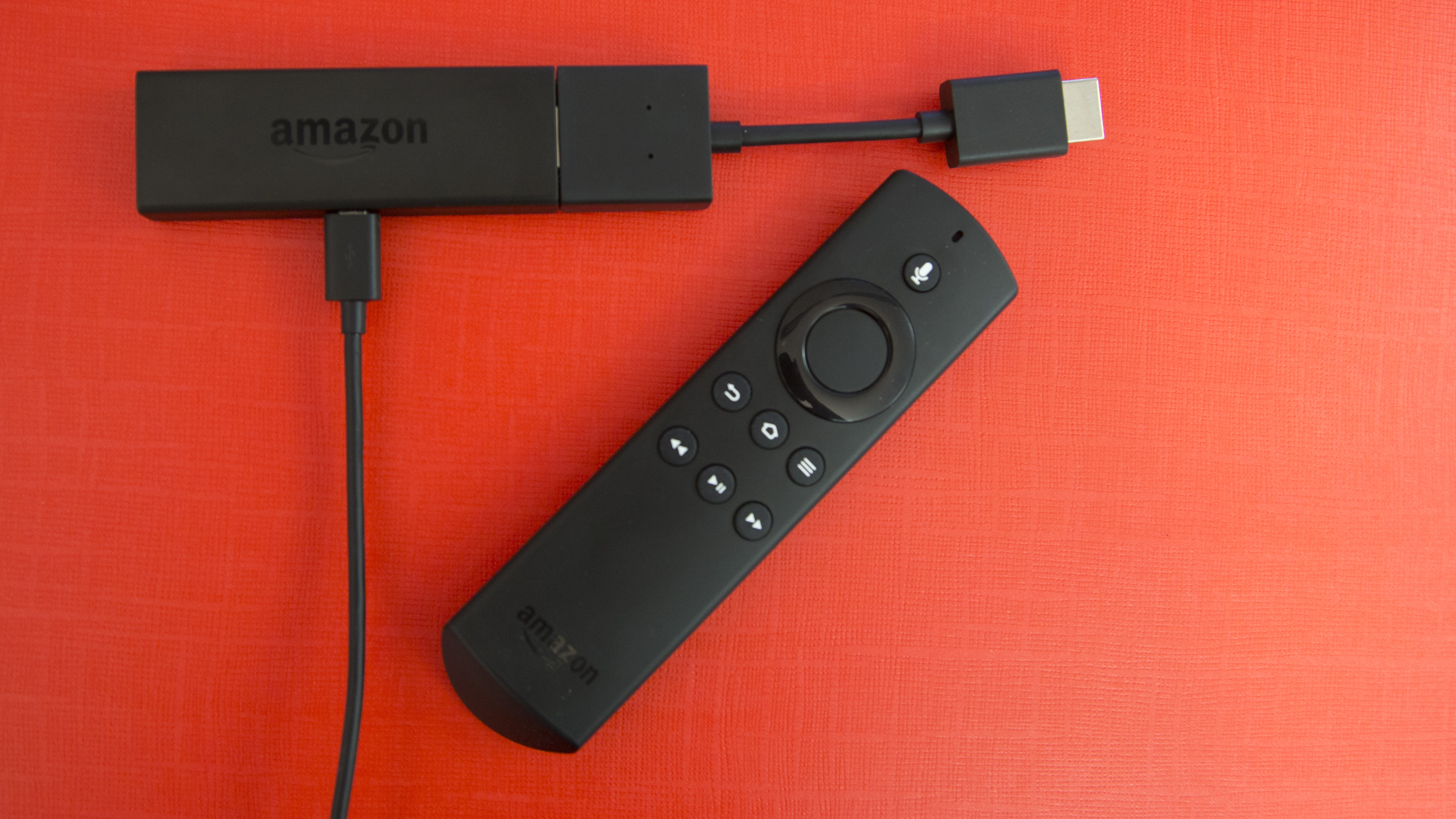Amazon Fire TV Stick
Amazon continues to push out more Fire TV products, but the Amazon Fire TV Stick – the cheapest of the lot – remains one of our favorites. It might not be top-of-the-line (it doesn't have 4K like the Amazon Fire TV), but Amazon won't hold buying a budget streamer against you.
Despite the budget price, the Fire TV Stick's interface (including voice search) is impressively speedy and snappy, and it allows access to most of the apps you’d need on a regular basis. Throw in the platform's rich search library, through Amazon Video, and you have all the ingredients for one of the best streaming sticks on the planet.
Still, while Amazon's streaming dongle has improved a lot since its release, there's still room for improvement here: despite its large library of apps, major streaming services like Now TV are missing, and while the voice search doesn't cover enough of the big services.
If you can stay within the confines of Amazon's video safe haven, you'll find a lot to love about the budget-friendly Amazon Fire TV Stick. On the other hand, if you're the kind of cinephile who doesn't like being constrained to a handful of services, you'd be better off examining Roku's offerings or Google's Chromecast instead.
- Best Amazon Prime Instant TV Shows: 25 to choose from
- Best Netflix TV Shows: 25 of the best

Design
If you’ve used an Amazon Fire TV Stick in the past then you know what to expect in a physical sense from the new device.
The stick itself measures 85.9 x 30.0 x 12.6mm, and is designed to plug directly into an HDMI port on the back of your TV.
Amazon’s hardware is a little wider than a standard HDMI cable, so in the likely event that it’s too bulky to plug directly into the HDMI port, Amazon also includes a short male-to-female HDMI cable to help it fit.
On the side of the stick is a micro USB port for powering the device. If you’ve got a newer TV then there’s a good chance it’ll have a USB port on the back for powering such devices, but if not Amazon also includes a power adaptor in the box, and the supplied USB cable should be more than long enough to reach your power strip.
Internally the device has seen a bit of an upgrade over the previous generation of Fire TV Stick. Its Wi-Fi has been upgraded from 802.11n to the faster 802.11ac standard, which should allow content to buffer as quickly as possible. Its CPU has jumped from a dual-core to a quad-core, Dolby support has jumped to 5.1, and the Bluetooth version has gone up from 3.0 to 4.1.
Unfortunately the one spec you’re likely to care the most about, resolution, has seen no change between the previous generation of the Fire TV Stick and this one. It’s still a 1080p, non-HDR streaming stick, despite Google’s Chromecast Ultra proving that the dongle form factor is able to handle 4K just fine. If you want a streamer that’s able to handle 4K with the Amazon name on it, then you’re going to have to opt for the more premium Amazon Fire TV dongle or something similar.

The remote is where we find the biggest change with this version of the Amazon Fire TV Stick. The bottom six buttons are exactly the same as on the previous remote, as is the four-way nav pad which allows you to navigate the device’s menus.
What’s changed is the addition of a voice control button, which you hold down to summon Alexa: in theory that makes up for the simplicity of the remote by allowing you to search for the exact show that you want without having to type using an on-screen keyboard.
However in practice its functionality is limited, something we’ll get into more in the performance section below.
You also have the option of using the Fire TV remote on a smart device, which has the benefit of offering an on-screen keyboard that’s much faster than using the remote to type. Annoyingly, though, this keyboard is limited to apps which use Amazon’s own keyboard.
This means that for an app like BBC iPlayer, which has its own keyboard built into the software, you won’t be able to use the app’s on-screen keyboard – instead you’ll be forced to laboriously navigate the keyboard on your television screen using the remote.
The selection of apps, in the UK at least, is fairly decent. Catch-up services from each of the major broadcasters are present (including UKTV), as are Netflix and Amazon Prime Instant Video (naturally). The one major omission from a UK perspective is Now TV, which is all that prevents the Amazon Fire TV stick from having a full suite of software.
For customers in the US there are even more options like Hulu, Sling TV and DISH's new DISH Now service that lets you stream content from your Hopper to your Amazon Fire TV wherever you are in the world.

Performance
The Amazon Fire TV Stick is a speedy piece of hardware. Scrolling through menus is delightfully quick, and once you find something you want to watch it loads almost instantly (depending, naturally, on the speed of your internet connection).
The Amazon Fire TV Stick’s user interface is laid out in a straightforward way. Recently accessed shows and apps can be found on the home screen, or you can scroll up and across to find different content and apps.
Annoyingly, for many apps you can’t access their content directly from the home screen; you’ll have to navigate to the app first, and then find content within the app.
The result is that finding what you want to watch may take you a little longer depending on which platform it’s on, especially if you’re making use of the Fire TV Stick’s search functionality.
If it’s on one of the platforms supported by Amazon’s universal search (Amazon Prime and Netflix being the two main examples) then you’re laughing. You have two options here. Either you head up and left on the main menu to reach the search box, and enter the TV show or film name on the on-screen keyboard, or you can simply hold down the voice search button on the remote and say the name of the content you’d like to watch.
If you’ve ever used Alexa on an Amazon Echo then you’ll know it’s a very accurate piece of voice recognition software. It was able to understand what show we were looking for almost every time, and on the one occasion it didn’t, it presented two options for us to choose from on the screen.

However, the unfortunate fact is that a lot of the streaming services on the Fire Stick aren’t covered by this universal search functionality, and this makes their content much harder to find.
Search for a show that’s only available through the BBC iPlayer for instance, and Amazon’s software will have absolutely nothing to show you. It’s not even intelligent enough to know which streaming service the show is available on.
Instead you’ll have to navigate to the app in question (which can be done using voice search), open it, and manually find the program via the app’s own interface – and here you won’t be able to use Alexa to search, so you’ll have to navigate an on-screen keyboard using your remote.
The search function, including Alexa, is more or less limited to searching for program titles, despite the steps Amazon has taken with its X-ray functionality, which allows you to access IMDB information within its shows.
Search for ‘Jeremy Clarkson’ for example, and rather than bringing up Amazon’s flagship show, The Grand Tour, you’re instead confusingly given a link to the TV show Dexter of all things.
Although Amazon’s search functionality is fast and accurate, it only covers a fraction of the content you’re likely to be streaming, and it’s not nearly as clever or as capable as Alexa on the Echo.
Alexa is also under-utilised when it comes to controlling the playback of content. You’re able to skip ahead to the next episode using your voice, but you’re not able to skip back an episode – and if you’re watching a series on anything other than Amazon Prime then you won’t even be able to skip forward.

We liked
The Amazon Fire TV Stick’s interface is quick and snappy. It’s intuitively laid out, and finding most content is quick and easy.
Once you get to your content it streams without any complaints or buffering. Playback is smooth and looks good.
The voice search functionality is quick and accurate when searching for Amazon or Netflix content, and it’s also a speedy way of hopping between apps. Most major streaming services are supported.
We disliked
Although you can access Amazon and Netflix content from the home screen or search results directly, most other apps require you to launch the app in question first and then navigate to its content. This limits the usefulness of the device’s search functionality, especially its excellent Alexa voice recognition search.
Alexa is also under-utilised when it comes to controlling playback. You can use it to skip to the next episode, but you can’t skip backwards, and nor can you jump to a particular episode.
Resolution is limited to 1080p, although this is perhaps understandable given that this is a budget-focused device.
Being able to use the Fire TV app to enter text is useful, but the amount of situations in which this actually works is very limited.

Final verdict
The Amazon Fire TV Stick with Alexa Voice Remote feels like a missed opportunity. There’s so much functionality here that should make the device easier to use, but which ultimately only ends up being of benefit for Amazon’s own video content.
If you’re watching Amazon or Netflix content then the interface is a dream. It’s quick, voice search works well, and it’s easy to find what you want to watch.
Venture into more niche streaming services, however, and the stick’s functionality is much more basic, offering merely a portal to each app’s own interface rather than functionality of its own.
This is a solid piece of streaming hardware, but it’s not the step forward we hoped Alexa might have enabled it to be.
If you’re in the market for a Fire TV device, it might be best to wait to see what Amazon brings out soon. That’s because it’s teased the Amazon Fire TV Cube, which hasn’t gone on sale yet, but could replace the current generation of Amazon Fire TV Sticks.
0 comments:
Post a Comment